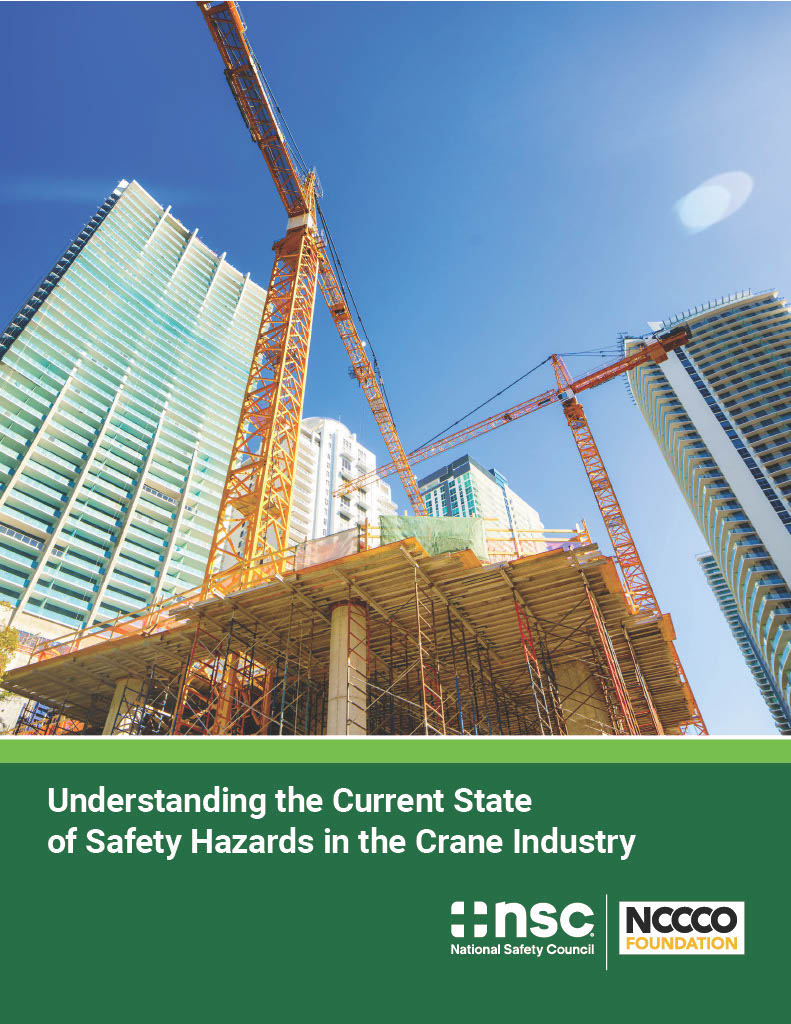Safety Research
Safety Research in the Crane Industry
NCCCO Foundation and the National Safety Council (NSC) through its Work to Zero initiative are partnering to research and ultimately improve safety in the crane industry.
The NCCCO Foundation intends to share the report’s findings throughout the year and focus its safety education outreach on the top hazards identified in the report.
Currently three safety reports have been developed through the partnership, Addressing Heat Stress in the Crane Industry, Understanding the Current State of Safety Hazards in the Crane Industry and Potential Technology Solutions to Address Hazards in the Crane Industry.
The Heat Stress report focuses on the common hazard of heat and various ways to mitigate the risks. The State of Safety Hazards report includes findings regarding the top hazardous situations, most common risks, most common causes of injuries, perceptions of safety training and compliance, and use of safety technology in the crane industry. The Potential Technology Solutions report expands on the hazard survey findings and examine the current state of crane industry hazards and explore potential technology solutions to address those risks. The report includes an overview of 13 safety technology solutions that have the potential to eliminate or mitigate risks within the crane industry.
In addition, two case studies on specific technology solutions (Drones and Cameras) were published to provide examples of how technology is currently being used in the crane industry.
- Sign up for NCCCO Foundation email list to receive notification of future research and education announcements
- Access Understanding the Current State of Safety Hazards in the Crane Industry
- Access Potential Technology Solutions to Address Hazards in the Crane Industry
- Access Addressing Heat Stress in the Crane Industry Report



